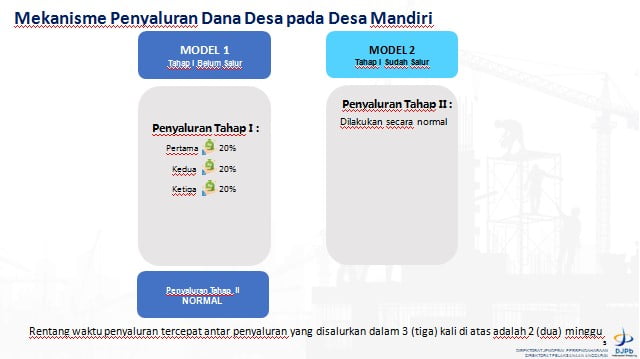The U.S. Bolsters Europe's Northern Front Amidst Growing Russia Fears

Table of Contents
Increased U.S. Military Presence in the Baltic States and Poland
The increased U.S. military presence in the Baltic states (Estonia, Latvia, and Lithuania) and Poland is a cornerstone of the West's strategy to deter potential Russian aggression. This involves a significant upswing in troop deployments and military exercises, signaling a clear commitment to regional security.
- Military Exercises: Exercises like Defender Europe and various Baltic-focused operations showcase the U.S.'s commitment to collective defense. These large-scale maneuvers demonstrate interoperability and readiness, reinforcing NATO's commitment to the region.
- Troop Deployments and Equipment: Thousands of U.S. troops are now stationed on a rotational basis in the region, equipped with advanced weaponry, including armored vehicles, air defense systems, and other critical military hardware. The specific numbers and locations are often kept confidential for security reasons.
- Base Locations and Installations: U.S. forces utilize existing infrastructure and bases in the region, supplemented by temporary deployments to strategic locations across the Baltic states and Poland. This dispersed approach aims to improve response times and enhance deterrence.
- Rotational Deployments: The strategic use of rotational deployments ensures a persistent military presence while managing logistical complexities. This continuous cycle of troop rotations maintains a high state of readiness and showcases a long-term commitment.
Enhanced NATO Cooperation and Defense Strategies
The increased U.S. involvement has significantly strengthened NATO cooperation and fostered a more robust collective defense posture. The alliance is working to strengthen its capabilities across multiple domains.
- Increased Joint Military Training: NATO allies are conducting more frequent and larger-scale joint military exercises, improving interoperability and coordination. This enhanced training directly contributes to the alliance's overall readiness.
- Improved Intelligence Sharing: NATO members are enhancing their intelligence-sharing mechanisms to ensure a more comprehensive understanding of potential threats and to improve early warning capabilities. This collaborative approach strengthens collective security.
- Strengthened Air and Naval Patrols: NATO has increased air and naval patrols in the Baltic Sea to monitor Russian activity and deter potential aggression. This increased surveillance serves as a visible deterrent.
- Enhanced Cyber Security Cooperation: Recognizing the growing threat of cyber warfare, NATO allies are working together to enhance their cyber security defenses and share best practices. Cybersecurity is now viewed as a critical component of collective defense.
- Deployment of Additional NATO Forces: Beyond the U.S. presence, other NATO allies have also increased their contributions to the collective defense of the region, further reinforcing the alliance's commitment to the Northern Front.
Russia's Response and the Implications for Regional Stability
Russia has responded to the increased Western military presence with a predictable pattern of countermeasures, further exacerbating regional tensions.
- Military Build-up along Borders: Russia has increased its military activities and deployments along its borders with the Baltic states and Poland, creating a visible show of force.
- Increased Military Activity and Exercises: Similar to NATO, Russia has engaged in more frequent and large-scale military exercises near the borders, demonstrating its military capabilities.
- Rhetorical Responses and Diplomatic Efforts: Russia has employed strong rhetoric, condemning the increased Western military presence while simultaneously engaging in diplomatic efforts to de-escalate tensions.
- Potential Scenarios for Escalation or De-escalation: The current situation presents a delicate balance. While the increased Western presence aims to deter escalation, miscalculation or accidental incidents could quickly lead to a dangerous escalation. Diplomatic efforts are crucial in mitigating this risk.
The Strategic Importance of the Northern Front
The Baltic region holds significant strategic importance due to its geographical location and geopolitical implications.
- Access to the Baltic Sea and its Strategic Waterways: The Baltic Sea is a crucial waterway for trade and transportation, making control of its access points strategically vital.
- Proximity to Russia’s Kaliningrad Oblast: The Russian exclave of Kaliningrad is situated on the Baltic coast, making the region a potential flashpoint.
- Vulnerability of the Baltic States: Given their proximity to Russia and smaller military capabilities, the Baltic states are particularly vulnerable.
- Importance of Energy Infrastructure: The region is also a crucial node for energy infrastructure, making its security vital for Europe's energy supply.
Conclusion: The U.S. Bolsters Europe's Northern Front: A Necessary Response?
The U.S. bolstering Europe's Northern Front is a multifaceted response to growing Russian assertiveness. This strategy involves a substantial increase in U.S. military presence, strengthened NATO cooperation, and a demonstrable commitment to deterring potential aggression. While Russia's response underscores the ongoing geopolitical tensions, the Western strategy aims to maintain regional stability through a combination of military strength and diplomatic engagement. Understanding the nuances of this complex situation is paramount. To stay informed about the ongoing developments regarding the U.S. bolstering Europe's Northern Front and the evolving geopolitical landscape, follow reputable news sources and think tanks specializing in Eastern European security and U.S. foreign policy. Staying informed empowers you to better understand this critical region and its implications for global security.

Featured Posts
-
 Bad Credit Loans Understanding Guaranteed Approval And Direct Lender Options
May 28, 2025
Bad Credit Loans Understanding Guaranteed Approval And Direct Lender Options
May 28, 2025 -
 Unlikely Encounter Jannik Sinner And Pope Leo Xiv At The Italian Open
May 28, 2025
Unlikely Encounter Jannik Sinner And Pope Leo Xiv At The Italian Open
May 28, 2025 -
 Gubernur Koster Prioritaskan Bkk Untuk 6 Kabupaten Mekanisme Penyaluran Dan Program Strategis
May 28, 2025
Gubernur Koster Prioritaskan Bkk Untuk 6 Kabupaten Mekanisme Penyaluran Dan Program Strategis
May 28, 2025 -
 Offre Limitee Samsung Galaxy S25 128 Go A 814 22 E
May 28, 2025
Offre Limitee Samsung Galaxy S25 128 Go A 814 22 E
May 28, 2025 -
 Sinner Premiere Michael B Jordan And Hailee Steinfelds Red Carpet Appearance
May 28, 2025
Sinner Premiere Michael B Jordan And Hailee Steinfelds Red Carpet Appearance
May 28, 2025
